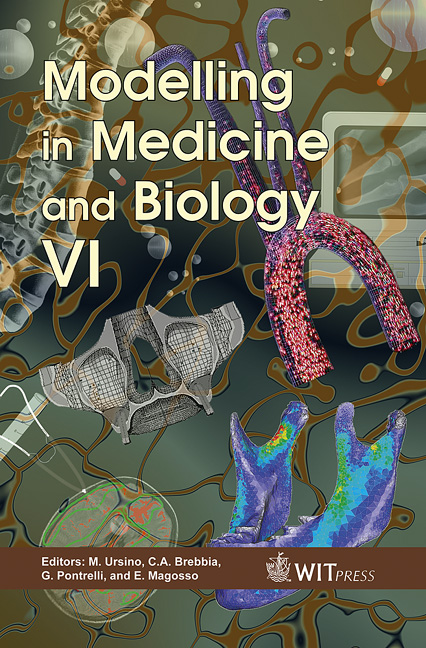Optical Monitoring Of The Heart Beat
Price
Free (open access)
Transaction
Volume
8
Pages
10
Published
2005
Size
407 kb
Paper DOI
10.2495/BIO050181
Copyright
WIT Press
Author(s)
M. De Melis, M. Grigioni, U. Morbiducci & L. Scalise
Abstract
Monitoring heart beat and in venereal cardiac activity is a typical task requested in a clinical environment to analyze a great variety of patient’s conditions. Obtaining this information without contact with the patient’s skin represents a future tool in a large number of fields also outside the clinics. Generally this task cannot be accomplished when the patient’s condition determines impairment of their health so that having skin contact or any other surface contact has to be avoided, or when the type of functional situation (people with or within confined environment) does not permit the use of any kind of sensors or electrodes within the examination environment. We propose a new technique using laser vibrometry capable of obtaining non-contact monitoring of the heart rate (HR) and retrieving physiological quantities characterizing cardiac activity measuring the motion’s properties of the external surface of the human chest on several cardiovascular sites or on the carotideo site. ECG and vibratory signals from the chest wall and carotid were simultaneously recorded. To do this, a measurement bench was realized based on a laser Doppler vibrometer. Recorded signals were collected afterwards to measure the consecutive RR and vibrocardiographic (VV) intervals. Sequences of both RR and corresponding VV intervals were obtained; based on these, tachograms were built. Poincare maps, displaying the relationship between a point and its consecutive in a time series, were obtained. In order to stress the limits of the vibratory signals in representing HR variability (HRV) as the ECG, the power spectral densities of the tachograms were performed. A comparison of the obtained results highlights the coincidence for ECG and the chest wall vibratory investigated information content, confirming the proposed method as an alternative to the typical ECG method when non contact HR activity monitoring must be provided. Keywords: cardiac displacement, heart rate variability, laser Doppler vibrometry, electrocardiography, tachograms, spectral analysis.
Keywords
cardiac displacement, heart rate variability, laser Doppler vibrometry, electrocardiography, tachograms, spectral analysis.





